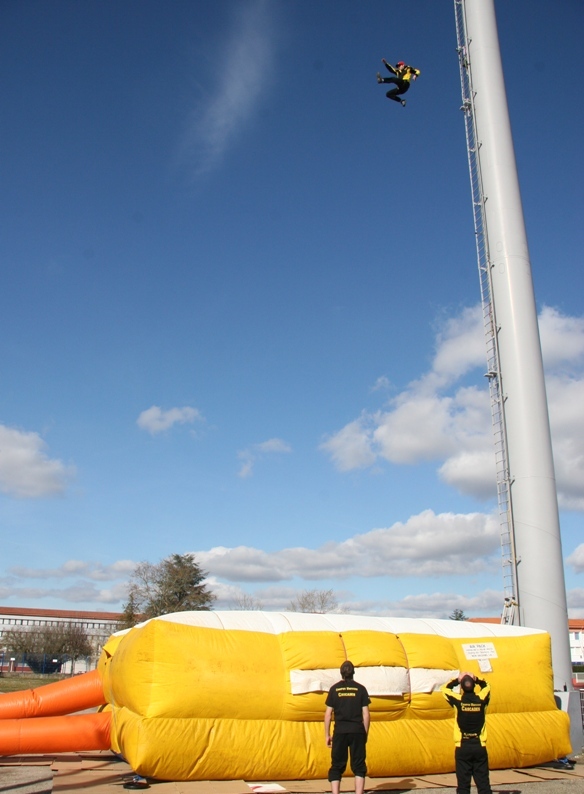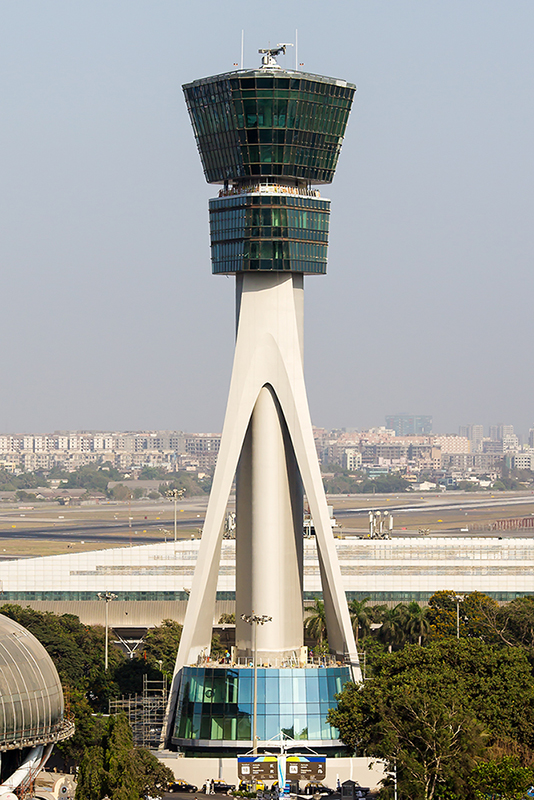|
Loftleiðir Flight 001
Loftleiðir Flight 001 was a Hajj charter flight operated by a Douglas DC-8 which crashed on approach to Colombo, Sri Lanka on 15 November 1978. The crash killed 183 out of 262 passengers and crew members. The official report by Sri Lankan authorities determined the probable cause of the crash to be the failure of the crew to conform to approach procedures; however, American and Icelandic authorities claimed faulty equipment at the airport and air traffic control errors as the reasons for the crash. It was the second-deadliest aviation accident in 1978, behind Air India Flight 855. With 183 fatalities, the crash of Flight 001 is the deadliest crash involving an Icelandic airline and the second deadliest in Sri Lankan aviation history after Martinair Flight 138, another chartered DC-8 that crashed four years earlier(also chartered by Garuda). Aircraft The aircraft involved in the accident was a Douglas DC-8-63CF named ''Leifur Eiríksson'' and registration TF-FLA, operated by L ... [...More Info...] [...Related Items...] OR: [Wikipedia] [Google] [Baidu] |
Controlled Flight Into Terrain
In aviation, a controlled flight into terrain (CFIT; usually ) is an aviation accidents and incidents, accident in which an airworthy aircraft, fully under pilot control, is unintentionally flown into the ground, a body of water or other obstacle. In a typical CFIT scenario, the aircrew, crew is unaware of the impending collision until impact, or it is too late to avert. The term was coined by engineers at Boeing in the late 1970s. Accidents where the aircraft is out of control at the time of impact, because of mechanical failure or pilot error, are classified instead as uncontrolled flight into terrain, or UFIT. Incidents resulting from the deliberate action of the person at the controls, such as a forced landing, an act of terrorism, or suicide by pilot, are also excluded from the definition of CFIT. According to Boeing in 1997, CFIT was a leading cause of airplane accidents involving the loss of life, causing over 9,000 deaths since the beginning of the commercial jet aircra ... [...More Info...] [...Related Items...] OR: [Wikipedia] [Google] [Baidu] |
Aviation Safety Network
The Flight Safety Foundation (FSF) is a non-profit, international organization concerning research, education, advocacy, and communications in the field of aviation safety. FSF brings together aviation professionals to help solve safety problems and bring an international perspective to aviation safety-related issues for the public. History Since its founding in 1945, the foundation has acted as a non-profit, independent clearinghouse to disseminate safety information, identify threats to safety, and recommend practical solutions, like, for example, the Approach and Landing Accident Reduction (ALAR) toolkit. Today, the foundation provides leadership to more than 1000 members in more than 100 countries. The Aviation Crash Injury Research (AvCIR) Division initiated by Hugh DeHaven became part of FSF in April 1959, being transferred from Cornell University. Objectives The main foundation's stated objectives are to: * Anticipate, identify and analyze global aviation safety issues an ... [...More Info...] [...Related Items...] OR: [Wikipedia] [Google] [Baidu] |
Airliner Accidents And Incidents Caused By Pilot Error
An airliner is a type of airplane for transporting passengers and air cargo. Such aircraft are most often operated by airlines. The modern and most common variant of the airliner is a long, tube shaped, and jetliner, jet powered aircraft. The largest of them are wide-body aircraft, wide-body jets which are also called twin-aisle because they generally have two separate aisles running from the front to the back of the passenger cabin. These are usually used for Flight length#Short-haul and long-haul, long-haul flights between airline hubs and major cities. A smaller, more common class of airliners is the narrow-body aircraft, narrow-body or single-aisle. These are generally used for short to medium-distance flights with fewer passengers than their wide-body counterparts. Regional airliners typically seat fewer than 100 passengers and may be powered by turbofans or turboprops. These airliners are the non-mainline (flight), mainline counterparts to the larger aircraft operated by ... [...More Info...] [...Related Items...] OR: [Wikipedia] [Google] [Baidu] |
Aviation Accidents And Incidents In 1978
Aviation includes the activities surrounding mechanical flight and the aircraft industry. ''Aircraft'' include fixed-wing and rotary-wing types, morphable wings, wing-less lifting bodies, as well as lighter-than-air aircraft such as hot air balloons and airships. Aviation began in the 18th century with the development of the hot air balloon, an apparatus capable of atmospheric displacement through buoyancy. Clément Ader built the "Ader Éole" in France and made an uncontrolled, powered hop in 1890. This was the first powered aircraft, although it did not achieve controlled flight. Some of the most significant advancements in aviation technology came with the controlled gliding flying of Otto Lilienthal in 1896. A major leap followed with the construction of the ''Wright Flyer'', the first powered airplane by the Wright brothers in the early 1900s. Since that time, aviation has been technologically revolutionized by the introduction of the jet engine which enabled aviation ... [...More Info...] [...Related Items...] OR: [Wikipedia] [Google] [Baidu] |
Turkish Airlines Flight 6491
Turkish Airlines Flight 6491 was a scheduled international cargo flight operated by ACT Airlines on behalf of Turkish Cargo, from Hong Kong to Istanbul via Bishkek, Kyrgyzstan. On 16 January 2017, the Boeing 747-400F flying the route crashed in a residential area while attempting to land in thick fog at Manas International Airport, Bishkek. A total of 39 people – all 4 crew members on board and 35 residents on the ground – were killed. It was Kyrgyzstan's deadliest plane crash since the crash of Iran Aseman Airlines Flight 6895 in 2008. The subsequent investigation found that the aircraft failed to acquire the correct instrument landing system's signal. Due to a series of errors from the pilots, the aircraft flew significantly higher than the proper altitude for approach. The autopilot then picked up a false glide slope signal. Having believed that they had captured the correct glide slope, both pilots let the autopilot put the aircraft into a descent. It then crashed in ... [...More Info...] [...Related Items...] OR: [Wikipedia] [Google] [Baidu] |
Rescue
Rescue comprises responsive operations that usually involve the saving of life, removal from danger, liberation from restraint, or the urgent treatment of injury, injuries after an incident. It may be facilitated by a range of tools and equipment necessary to deal with the specific circumstances. Rescues may be necessary in a wide range of circumstances and environments, and specialised procedures have been developed for many of these. A rescue may also be performed on an ad hoc basis by the people who are available on site, using equipment available on site or assembled from available materials, particularly when the rescue is urgent or it is unlikely that specialist assistance will be available within a reasonable time. First aid medical attention is often closely associated with rescue, and may be a necessary part of a rescue. Equipment used might include search and rescue dogs, mounted search and rescue horses, helicopters, the "Hydraulic rescue tools, jaws of life", and o ... [...More Info...] [...Related Items...] OR: [Wikipedia] [Google] [Baidu] |
Air Traffic Control
Air traffic control (ATC) is a service provided by ground-based air traffic controllers who direct aircraft on the ground and through a given section of controlled airspace, and can provide advisory services to aircraft in non-controlled airspace. The primary purpose of ATC is to prevent collisions, organise and expedite the flow of traffic in the air, and provide information and other support for pilots. Personnel of air traffic control monitor aircraft location in their assigned airspace by radar and communicate with the pilots by radio. To prevent collisions, ATC enforces Separation (air traffic control), traffic separation rules, which ensure each aircraft maintains a minimum amount of 'empty space' around it at all times. It is also common for ATC to provide services to all General aviation, private, Military aviation, military, and commercial aircraft operating within its airspace; not just civilian aircraft. Depending on the type of flight and the class of airspace, AT ... [...More Info...] [...Related Items...] OR: [Wikipedia] [Google] [Baidu] |
Radar Control
{{Short description, Type of air traffic control Radar control is a method of providing air traffic control services with the use of radar and Automatic Dependent Surveillance (ADS–B). The provision of air traffic control services without the use of radar is called procedural control Procedural control (also known as non-radar control) is a method of providing air traffic control services without the use of radar. It is used in regions of the world, specifically sparsely populated land areas and oceans, where radar coverage is .... Separation In air traffic control, the risk of aircraft colliding is managed by applying separation rules. These rules require aircraft to be separated by either a minimum vertical distance (usually 1,000-2,000 feet) or by a minimum horizontal distance. One of the means of determining horizontal separation is by a controller observing the radar returns of the aircraft to be at least a minimum horizontal distance apart. This is the essence of radar ... [...More Info...] [...Related Items...] OR: [Wikipedia] [Google] [Baidu] |
Runway
In aviation, a runway is an elongated, rectangular surface designed for the landing and takeoff of an aircraft. Runways may be a human-made surface (often asphalt concrete, asphalt, concrete, or a mixture of both) or a natural surface (sod, grass, soil, dirt, gravel, ice, sand or road salt, salt). Runways, taxiways and Airport apron, ramps, are sometimes referred to as "tarmac", though very few runways are built using Tarmacadam, tarmac. Takeoff and landing areas defined on the surface of water for seaplanes are generally referred to as waterways. Runway lengths are now International Civil Aviation Organization#Use of the International System of Units, commonly given in meters worldwide, except in North America where feet are commonly used. History In 1916, in a World War I war effort context, the first concrete-paved runway was built in Clermont-Ferrand in France, allowing local company Michelin to manufacture Bréguet Aviation military aircraft. In January 1919, aviation p ... [...More Info...] [...Related Items...] OR: [Wikipedia] [Google] [Baidu] |
Civil Aviation Authority Of Sri Lanka
The Civil Aviation Authority of Sri Lanka (CAASL) ( Sinhala: සිවිල් ගුවන්සේවා අධිකාරිය ''Sivil Guwanseva Adhikariya'') oversees the government approval and regulation of civil aviation matters for the nation of Sri Lanka. Its head office is in Katunayake as of 1 February 2018. History Its head office was formerly in Colombo. Units The Aircraft Accident Investigation Unit investigates aircraft accidents and incidents in Sri Lanka. References External links Flight Information Region In Sri LankaCivil Aviation Authority of Sri Lanka2013 contact information Sri Lanka
Sri Lanka, officially the Democratic Socialist Repu ...
[...More Info...] [...Related Items...] OR: [Wikipedia] [Google] [Baidu] |
Wind Shear
Wind shear (; also written windshear), sometimes referred to as wind gradient, is a difference in wind speed and/or direction over a relatively short distance in the atmosphere. Atmospheric wind shear is normally described as either vertical or horizontal wind shear. Vertical wind shear is a change in wind speed or direction with a change in altitude. Horizontal wind shear is a change in wind speed with a change in lateral position for a given altitude. Wind shear is a microscale meteorological phenomenon occurring over a very small distance, but it can be associated with mesoscale or synoptic scale weather features such as squall lines and cold fronts. It is commonly observed near microbursts and downbursts caused by thunderstorms, fronts, areas of locally higher low-level winds referred to as low-level jets, near mountains, radiation inversions that occur due to clear skies and calm winds, buildings, wind turbines, and sailboats. Wind shear has significant effects on ... [...More Info...] [...Related Items...] OR: [Wikipedia] [Google] [Baidu] |






